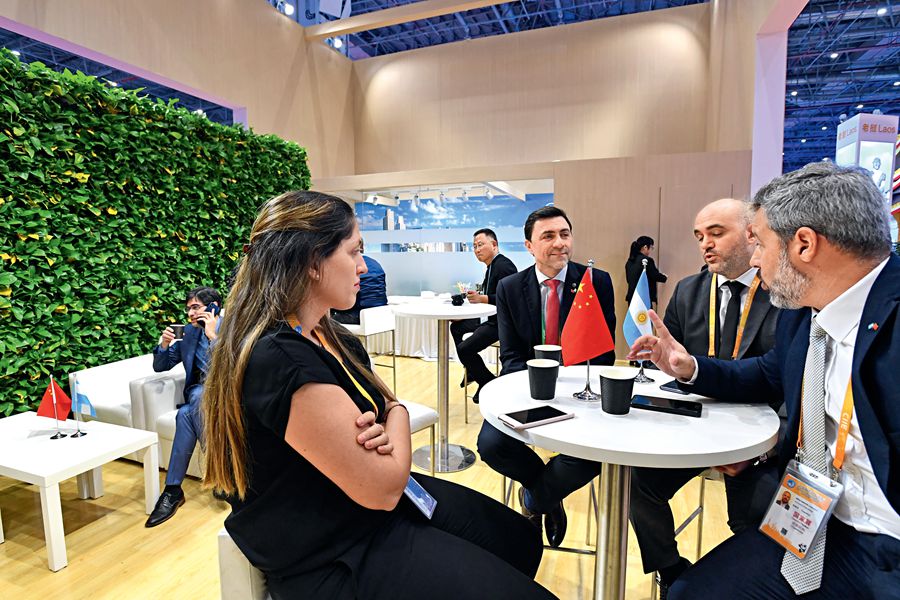By EVANDRO MENEZES DE CARVALHO

China has become Argentina’s second largest trade partner as bilateral cooperation expands and deepens to unprecedented levels.
ON the eve of the celebration of the 70th anniversary of the founding of the People's Republic of China and a year after celebrating the 40th anniversary of the reform and opening-up policy, China has established a new type of relationship with the world through a gradual reform of state institutions, and opening to international trade and foreign investment. Nowadays, China's economic and social development depends on a new international strategy that is more active and global in its scope.
The government of President Xi Jinping has been responsible for the strategic redefinition of China's foreign policy, expanding Chinese economic integration into the world through regional, continental and intercontinental cooperation projects and platforms that favor financial integration, free trade, infrastructure connectivity, and a better understanding among peoples.
The main foreign policy initiative that better translates this new international approach is the Belt and Road Initiative (BRI). A project of this magnitude promotes economic integration, but on a different basis if we compare it with the other economic integration initiatives that prevailed in the second half of last century. This is the reason why the BRI has a huge potential in expansion to Latin America.
But is there real political will and economic connection between the BRI and Latin America?
The Joint Communiqué of the Leaders Roundtable of the Belt and Road Forum for International Cooperation, adopted by 30 heads of state and government, points out that the BRI aims to build closer collaboration partnerships, “which include advancing North-South, South-South, and triangular cooperation.” To mention the South-South cooperation reveals that the BRI can go beyond the Eurasian region and reach other continents of the world, including South America. This is what is stated on item 5 of the Joint Communiqué. According to this paragraph, the BRI “enhances connectivity between Asia and Europe, which is also open to other regions such as Africa and South America.”
From 2013, with the beginning of President Xi Jinping's first term, China's relationship with Latin America began to attain unprecedented diplomatic importance, with a positive impact on the foreign policies of Latin American and Caribbean countries. China had become the second largest trade partner in the region. In 2014, President Xi made his first visit to several Latin American countries and attended the sixth BRICS Summit in Fortaleza, Brazil. The same year, the "Free Trade Area of the Asia-Pacific" (FTAAP) was launched at the APEC meeting in Beijing. It covers countries in South and Central America, and a Connectivity Blueprint for 2015-2025 was adopted to strengthen the infrastructure and people-to-people exchanges to make the Asia-Pacific region fully connected by 2025.
The first ministerial meeting of the Forum of China and the Community of Latin American and Caribbean States (CELAC), held in 2015, is an important milestone in the China-Latin America and Caribbean relationship. During the meeting, President Xi Jinping met nearly 30 representatives of CELAC and proposed that trade between the two sides should reach US $500 billion in the next 10 years, and that Chinese direct investment in Latin America should reach US $250 billion. Since then, the relationship between China and Latin America and Caribbean countries have come to a new level of comprehensive cooperation. In 2015, Chinese Premier Li Keqiang visited Brazil, Colombia, Peru, and Chile, and signed several agreements. The two visits of Chinese leaders to Latin America in less than a year show the importance that the Chinese government gives to the region.
In January 2018, the second ministerial meeting of the China-CELAC Forum was held in Santiago, Chile. In his message to the leaders present at the meeting, Xi appealed to Latin American countries to actively participate in the BRI to open a trans-Pacific cooperation path that will bring China closer to Latin America. The Special Declaration of Santiago on the Belt and Road Initiative declared that "the Chinese Party considers that Latin America and Caribbean countries are part of the natural extension of the Maritime Silk Route and are indispensable participants in international cooperation of the Belt and Road.” The China-CELAC Forum has become the main channel of cooperation between China and the entire CELAC region, and the BRI tends to be the framework of cooperation.
Latin America and the Caribbean countries are geographically distant from the original BRI routes, but they are under its influence because of Chinese investments and the trade with China. In other words, if a "new Silk Road" is a distant concept for Latin Americans, Chinese investments, on the other hand, are a very concrete reality for our countries. From this point of view, it can be seen that the Latin American region is already part of the great initiative of the BRI.
In his speech at the opening ceremony of the First Belt and Road Forum for International Cooperation in 2017, Xi said: “The pursuit of the Belt and Road Initiative is not a reinvention of the wheel.” In fact, there are many other models of economic cooperation in the world as well as in Latin America. But if China is not reinventing the wheel, at least it's making it spin. The BRI is a very welcome initiative in this world where there are some countries adopting a unilateralist approach and losing their faith in the benefits of multilateralism.
________
EVANDRO MENEZES DE CARVALHO is chief executive editor of the Portuguese edition of China Today, a professor of international law and head of the Center for Brazil-China Studies at the FGV’s Rio de Janeiro Law School, Brazil.